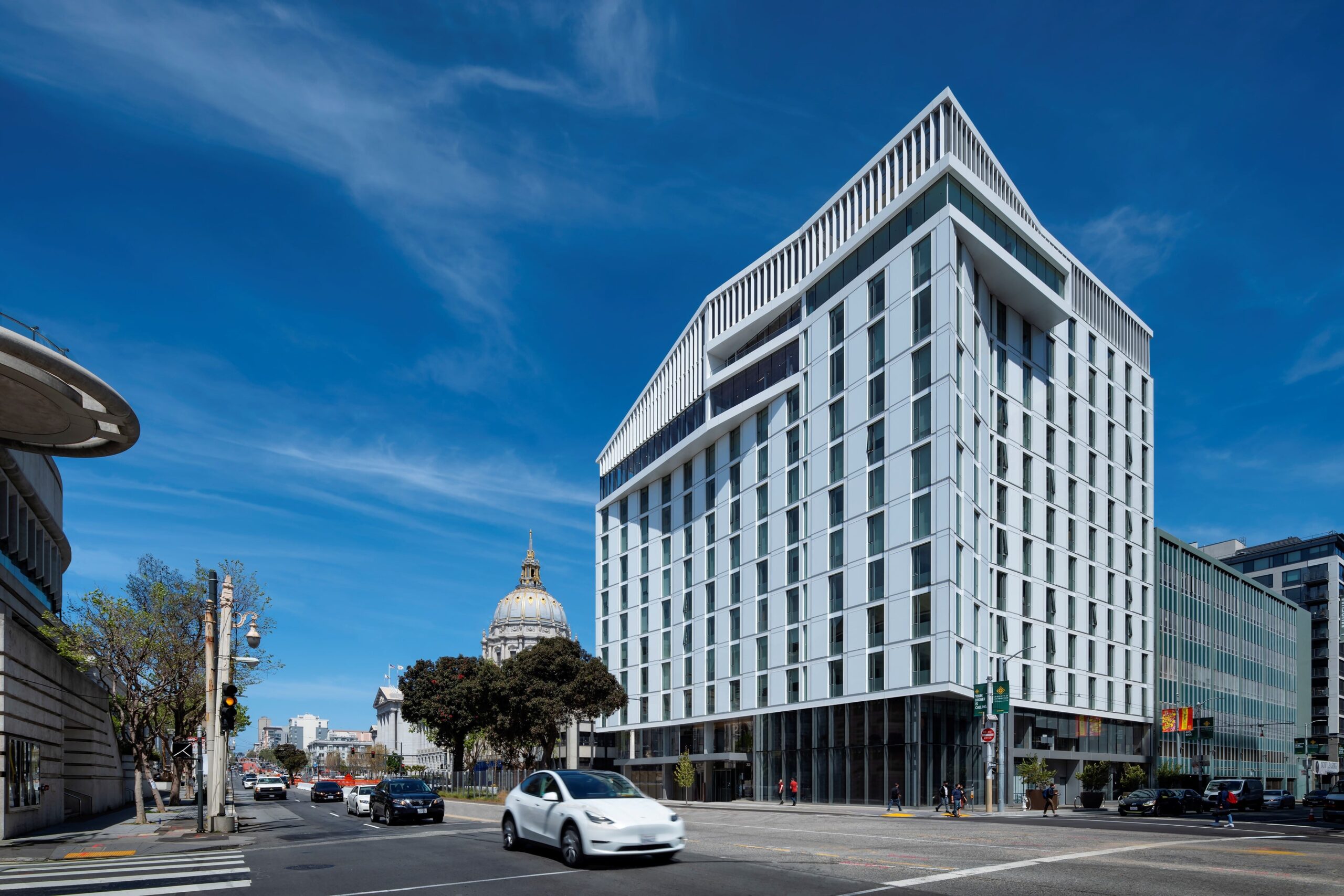The Cha Chi Ming Recital Hall, located on the ground floor of San Francisco’s recently completed Ute and William K. Bowes, Jr. Center for Performing Arts is quiet… or as the gang from Scooby-Doo might observe, a bit too quiet.
But that’s not because some nefarious businessman is attempting to spook the locals into submission. Rather, the space is so acoustically advanced that it’s completely soundproof, despite being fronted by glass on Van Ness Avenue and Hayes Street. Outside noises, whether from honking cars or loud pedestrians, are unable to seep into the hall—and vice-versa.
“Cha Chi Ming Recital Hall has a unique acoustic-isolation system so that literally the hall is completely quiet even though you’re on one of the most traveled corners of the city,” says David Stull, President of the San Francisco Conservatory of Music. “The acoustics of the space are startling. You’re staring at the glass and looking outside and you’re thinking, ‘How can it be this quiet in here?’”
A couple of weeks ago, Branford Marsalis took the Cha Chi Ming for a spin—teaching a master class in full view of pedestrians and drivers who happened to pass by. One of the world’s preeminent saxophonists, Marsalis (the brother of trumpeter Wynton Marsalis), was free to focus on the lesson, which was great for him, but perhaps disappointing to those who would have liked to eavesdrop on the acclaimed jazz musician’s lecture.
Part of the San Francisco Conservatory of Music—a local private academy—the $200 million, 14-story warren of state of the art halls, studios, and classrooms opens is edging toward its public debut. The center opens its doors this Friday for a slate of invite-only events, including a performance by cellist Yo-Yo Ma. SFCM staff and students, along with visiting instructors like Marsalis, have already been using its spaces.
Located across the street from Davies Symphony Hall and blocks away from the SFJAZZ Center and the War Memorial Opera House, the Bowes Center extends the music corridor that has emerged over decades near San Francisco City Hall. Besides the ground-floor recital hall, the center has two other performance spaces, including one floor that’s also visible from Van Ness Avenue; a studio that’s the new home of KDFC, a San Francisco classical music station; and a recording studio so advanced that the Recording Academy, which administers the Grammy Awards, is using it review releases for its upcoming awards program in January.
“They chose the studio to do the final listening for the Best Immersive Sound category for the Grammys,” says Stull. “The room was always imagined to be able to achieve these kinds of things.”
Until February, performances at the Bowes Center will be limited to SFCM students and invited guests, but the school says that concerts will be streamed on its website. And Stull says that nine out of 10 concerts at the center will be free when the Bowes Center does open to the public. (The delay in public attendance, Stull says, is so that SFCM can “develop COVID protocols for the building, make sure the elevator system works,” and do other things that ensure the center’s operations for the wider public.)
The SFCM recently acquired Opus 3 Artists, a management company that represents a phalanx of well-known musicians, including Marsalis and Ma. The acquisition, the school said, was made possible by an anonymous donor. More than a fourth of the Bowes Center’s financing, $46.4 million, came from William K. Bowes, Jr., a San Francisco-born biotech executive and venture capitalist who died in 2016. The financial gift was announced in 2018 and is said to be the largest single gift ever made to a conservatory.
As a musical administrator and a musician, Stull has worked in some of the country’s most venerated performance spaces, and he says the new center may be more formidable than any other—including New York’s Lincoln Center—that incorporates glass walls to invite views of the outside: “We’re not aware of a hall that has the technical sophistication of these spaces, which have substantially adjustable acoustics and that allow for this much transparency. There are halls that use glass but they’re smaller. And there are plenty of places that have glass in them, notably Lincoln Center, which has a view of the city. … But to maintain acoustical beauty in spaces with that much transparency (as the Bowes Center) is an engineering marvel.”
Whether other people agree with that assessment will be seen on Friday and, more importantly, in February, when the Bowes Center opens up to the general public. Instead of being on the outside looking in, they will be inside the recital halls that Marsalis and Ma played in, experiencing music that may or may not warrant Stull’s level of applause and admiration.
